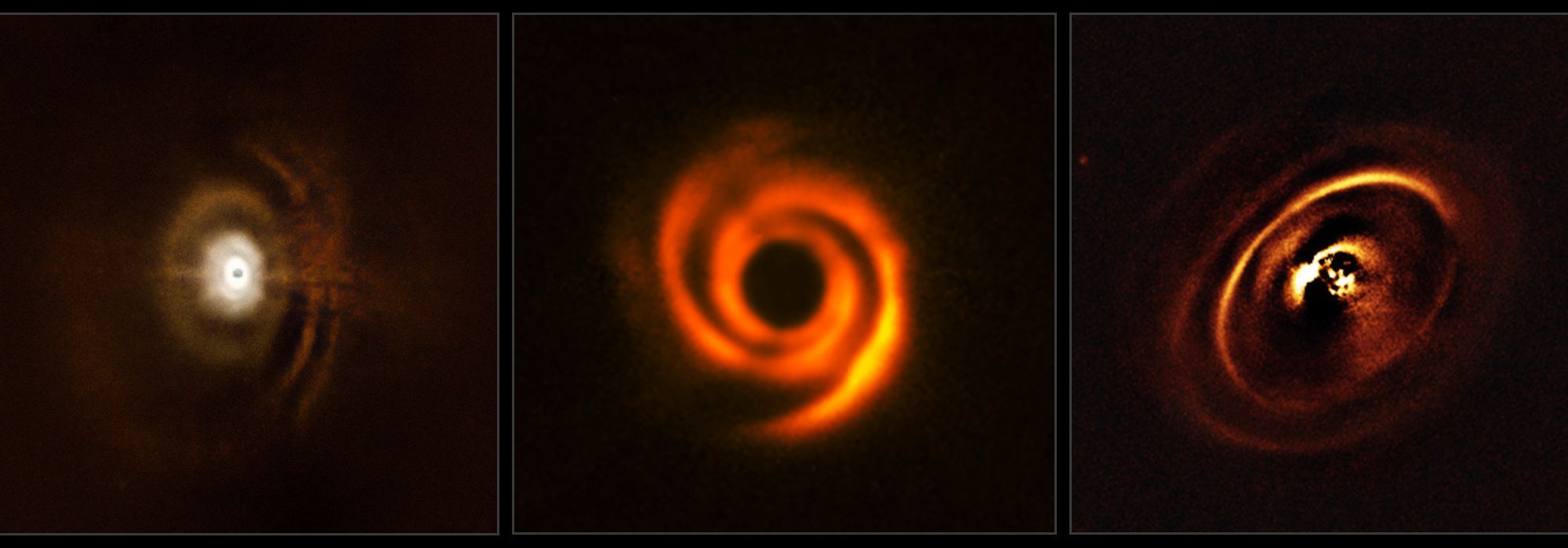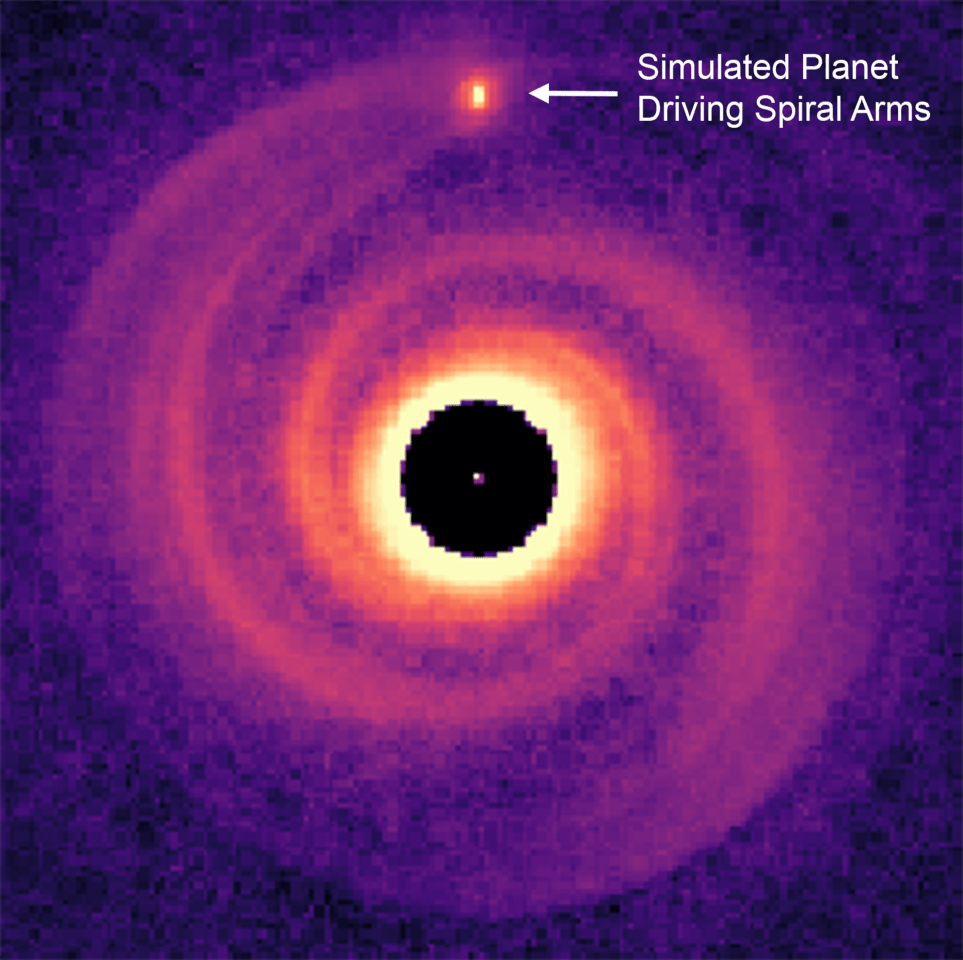When you hear the phrase “spiral arms” you probably think of galaxies. Lots of galaxies have bright arcs of stars that spiral away from their center, including our Milky Way. But not all galaxies have spiral arms, and galaxies aren’t the only celestial objects with spiral arms. About a third of protoplanetary disks around young stars have spiral arms, and we now think we know why.
In galaxies spiral arms are caused by density waves within the galactic disk. The density waves create a kind of traffic jam effect, where individual stars drift into and out of spiral arms, but the overall spiral structure is maintained. The spiral structure is further maintained by the higher density of gas and dust in the arms, which triggers star production within the arms.
Protoplanetary disks have a similar structure to young galaxies. They are both a flat disk of gas and dust orbiting a massive central bulge. But the difference in scale and age means we can’t simply say that spiral arms in galaxies and planetary disks have the same cause.

One model for planetary disk spirals is that they form similar to spiral galaxies. Essentially, gravitational instabilities within the disk trigger density fluctuations that quickly evolve into a spiral structure. The problem with this idea is that, unlike galaxies where stars only interact gravitationally, the gas within a disk exerts pressure which would work to disrupt the spiral structure.
Another idea is that the spiral structure is triggered by the presence of a large protoplanet. A Jupiter-sized object within a planetary disk would generate turbulence and a gravitational tug that could cause spiral arms to form, like ripples in a pond. The only problem with this idea is that large protoplanets have never been seen within a spiral protoplanetary disk. That is, until now.
 Simulation of how a protoplanet could create disk spiral arms. Credit: L. Krapp and K. Kratter/University of Arizona
Simulation of how a protoplanet could create disk spiral arms. Credit: L. Krapp and K. Kratter/University of Arizona
Astronomers have found a Jovian protoplanet orbiting a young star known as MWC 758, which is about 500 light-years from Earth. The planet, called MWC 758c, is about twice the mass of Jupiter and orbits its young star at a distance of about 100 AU, or more than three times the distance of Neptune from the Sun. The spiral disk system has been known for a while, but previous observations showed no evidence of a planet. That’s because MWC 758c is particularly red, meaning either it is very cool or shrouded by lots of dust. Low red wavelengths are difficult for ground-based telescopes to observe due to the thermal noise of Earth’s atmosphere. It took the Large Binocular Telescope Interferometer (LBTI), which specializes in infrared and near-infrared observations, to finally observe the gas giant.
The team plans on following up their ground-based observations with observations from the James Webb Space Telescope (JWST). This should provide even more detailed images, which will help them understand how the planet formed and the interactions between the planet and the spiral structure of the system.
The MWC 758 system is just a few million years old, but it is otherwise fairly similar to our own solar system. It’s quite possible that the Sun’s protoplanetary disk had a similar spiral structure, which would have played a crucial role in the formation of Earth.
Reference: Dong, Ruobing, Joan R. Najita, and Sean Brittain. “Spiral arms in disks: planets or gravitational instability?” The Astrophysical Journal 862.2 (2018): 103.
Reference: Wagner, K., et al. “Direct images and spectroscopy of a giant protoplanet driving spiral arms in MWC 758.” Nature Astronomy (2023).





